Kitchen Pantry Costs: How Much to Budget for Your Storage Solution
Stashing Your Cash: Planning for Your Perfect Pantry Are you tired of opening your kitchen cabinets only to find chaos instead of cans? Or perhaps...
5 min read
.png) Ranney Blair
:
Jul 27, 2023 2:00:00 PM
Ranney Blair
:
Jul 27, 2023 2:00:00 PM
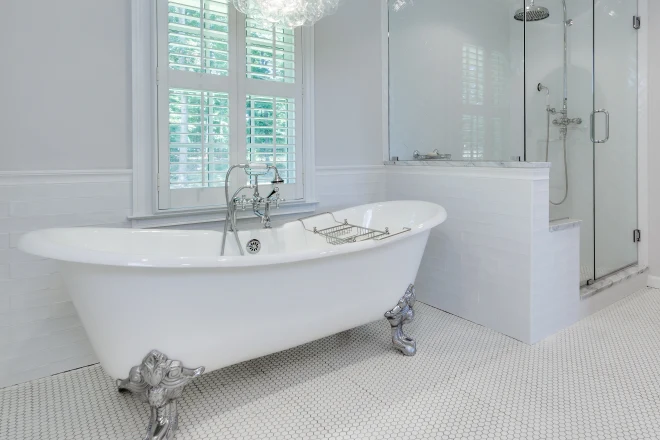
Ever found yourself pondering the difference between a freestanding bathtub and a built-in one?
Or perhaps you've wondered which one would best suit your bathroom remodeling plans?
If you're seeking answers to these questions, then you're in the right place.
This blog post will dive deep into the world of bathtubs, specifically focusing on the differences between freestanding and built-in options.
By the end, you'll not only know the pros and cons of each but also which one would be the perfect fit for your home in the greater Atlanta, Georgia, area.
Before we delve into the specifics, let's take a brief dip into the history of bathtubs.
Freestanding baths, especially the clawfoot tubs, have long been seen as the epitome of luxury and romance.
Picture a large, elegant tub, big enough for two, surrounded by flickering candles and the scent of bath oils in the air.
Sounds dreamy, right?
On the other hand, built-in baths, often installed in an alcove with walls on three sides, have been unfairly labeled as less luxurious and outdated.
But don't let these stereotypes fool you!
Much like the frameless or framed shower enclosure debate, both types of bathtubs have their unique charm and advantages.
The main difference between the two lies in their installation.
A freestanding tub, as the name suggests, stands alone anywhere in the room, giving you more flexibility with placement.
Built-in tubs, however, are typically enclosed on three sides and installed against a wall.

Freestanding bathtubs are often chosen for their aesthetic appeal.
They make a statement and can serve as the centerpiece of your bathroom.
Freestanding bathtubs come in a variety of designs, including the classic clawfoot tub and contemporary styles that sit flush on the ground or on a pedestal.
Pros:
Offers flexibility with placement
Serves as a statement piece
Wide array of design options
Perfect for long soaks and bubble baths
Cons:
Can be harder to clean around
May not retain heat as long
Plumbing lines may need to come up through the floor, increasing installation costs
Takes up more space in every dimension than a built-in bathtub

Built-in bathtubs are a practical choice for those who prefer showers but still want the option of a relaxing bath.
They are typically enclosed on three sides, making it easier to contain water, especially when showering.
Built-in bathtubs also take up less space and provide a ledge for keeping bath products within easy reach.
Pros:
Can make it easier to bathe or shower in one tub without having a separate tub and shower stall
Easier to contain water
The standardized plumbing requirements for a built-in bathtub can make installation less costly
Takes up less space
Cons:
Less design options
Placement is limited to walls
May be seen as less luxurious
Less impactful when it comes to making a centerpiece design statement

If you're someone who enjoys the convenience of a quick shower but also likes to indulge in a bath occasionally, a built-in bathtub might be the right choice for you.
Built-in tubs are perfect for shower-bath combos as they are designed to contain water effectively.
No more annoying wet shower curtains encroaching on your space!
Built-in tubs also have a practical edge.
They typically come with a ledge or surround, providing a handy place to keep your bath products, candles, or even a book.
Plus, they're a space-saver.
If your bathroom is on the smaller side, a built-in tub can help maximize your space.

Freestanding bathtubs are all about making a statement.
If you're looking to create a bathroom that exudes luxury and style, a freestanding tub might be the way to go.
They're often chosen for their aesthetic appeal and can serve as the centerpiece of your bathroom.
One of the key advantages of a freestanding tub is the flexibility it offers in terms of placement.
You can place it anywhere in the room (as long as it's near the plumbing), allowing you to make the most of your bathroom layout.
Imagine soaking in a warm bath while gazing out at a beautiful view!
When it comes to relaxation, both freestanding and built-in tubs have their merits.
Freestanding tubs, especially older models, are often deeper and longer, allowing bathers to fully immerse themselves in the water.
However, modern built-in tubs can also offer a deep and long bathing area, so don't be quick to dismiss them.
If you're planning on sharing your bath, consider a tub with the faucets and overflow drain in the middle.
This allows both bathers to recline comfortably without anything digging into their backs.
Now, that's a recipe for relaxation!

When choosing a bathtub, it's important to consider the weight of the tub, especially when filled with water and a bather.
Your bathroom floor must be strong enough to support this weight.
Most modern tubs are made of either acrylic or cast iron with a porcelain finish.
Cast iron tubs, whether built-in or freestanding, are heavier than acrylic tubs.
If your house is old, you might want to consult a plumber or engineer to ensure your floor can handle the weight.
One of the key factors to consider when choosing a bathtub is how well it retains heat.
After all, no one wants their warm, relaxing bath to turn cold too quickly.
Some people believe that freestanding tubs, being surrounded by air, might lose heat faster.
However, this can depend on the material of the tub.
Built-in tubs, especially those with insulation added to the wall behind them, can keep the water warm for longer.
Acrylic tubs, whether freestanding or built-in, also tend to hold heat longer than cast iron.
But remember, if you want to extend your bath time, you can always add a little more hot water.

Cleaning and maintenance are important considerations when choosing a bathtub.
Many people find it easier to clean around a built-in bath rather than navigating around (and under) a freestanding tub.
However, this can depend on the design of the freestanding tub.
Some models with a flat bottom can be easier to clean around than those with claw feet.

Thinking about swapping your current bathtub?
Whether you're considering switching from a freestanding to a built-in tub, or vice versa, it's important to consult a plumber to see what's feasible.
The plumbing requirements for the two types of tubs can be different.
For example, a freestanding tub might need plumbing lines coming up through the floor.
Also, if you have an old home with uneven or sloping floors, it might be easier to accommodate these with a built-in bath, which can be cut accordingly, than with a freestanding bath.
If you are planning to remodel your bathroom, be sure to check out our ultimate guide to planning and executing a bathroom remodeling project.
When it comes to bathtub costs, freestanding baths tend to be pricier.
This is because they usually have a finished exterior on all sides, whereas built-in tubs typically have only one finished side.
However, remember to factor in the cost of additional features like a tile surround or a glass shower door for a built-in bath.
Our guide to budgeting for bathroom remodeling can help you determine the best bathtub for your project.

In the end, the choice between a freestanding and a built-in bathtub comes down to your personal preference, bathroom space, and budget.
Both types of tubs have their unique charm and advantages.
A freestanding tub can serve as a luxurious centerpiece in your bathroom, while a built-in tub can provide practicality and convenience.
Remember, your bathtub is more than just a place to get clean.
It's a place to relax, unwind, and escape from the world for a while.
So, choose a tub that you'll love to spend time in.

Whether you're leaning towards a freestanding tub or a built-in one, Ranney Blair Remodeling can help you make your bathroom remodeling dreams come true.
With years of experience in the Atlanta, Georgia, area, we understand the unique needs and preferences of our clients.
We're committed to delivering quality workmanship and exceptional customer service.
Ready to start your bathroom remodeling project?
Fill out our contact form today, or give us a call.
Let's create a bathroom that's not just functional but also a personal sanctuary where you can relax and rejuvenate.
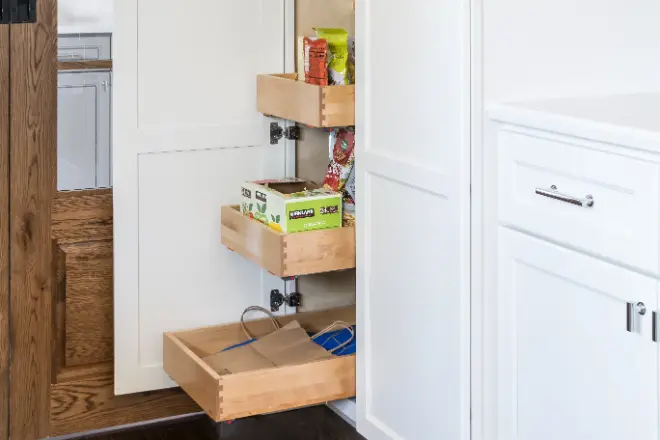
Stashing Your Cash: Planning for Your Perfect Pantry Are you tired of opening your kitchen cabinets only to find chaos instead of cans? Or perhaps...
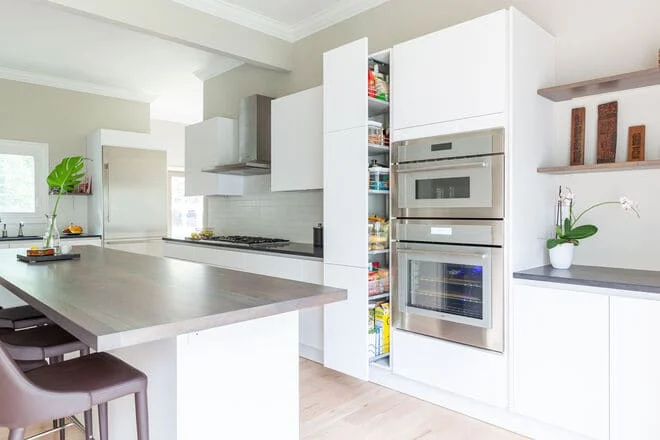
Key Points Walk-in pantries offer extensive storage and customization options, ideal for homeowners with space to accommodate a larger footprint. ...
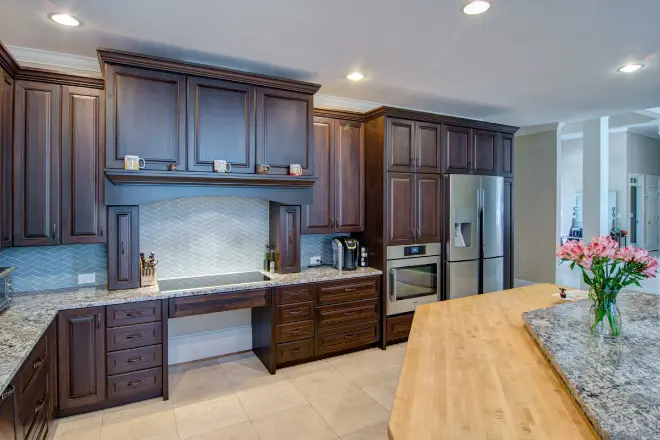
Key Points Optimizing your kitchen layout enhances both functionality and style, catering to the multifaceted uses of modern kitchens, from cooking...
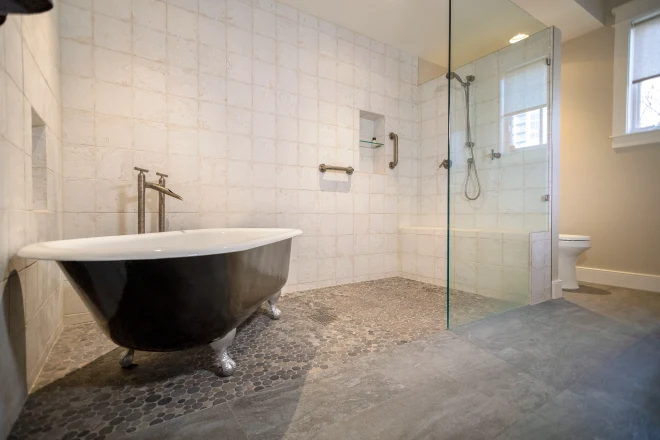
10 min read
A New Era of Bathing Comfort Ever found yourself yearning for a long, relaxing soak in a bathtub after a hard day's work? Or perhaps you've dreamt...
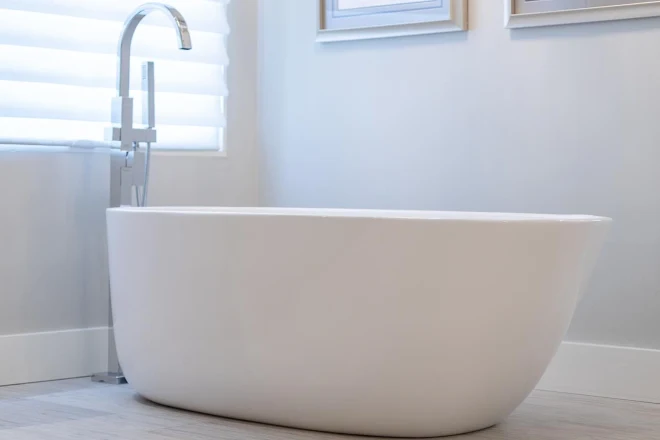
15 min read
Are you considering a bathroom remodel but worried about the price tag? Not sure how to select the perfect tub without breaking the bank? This guide...
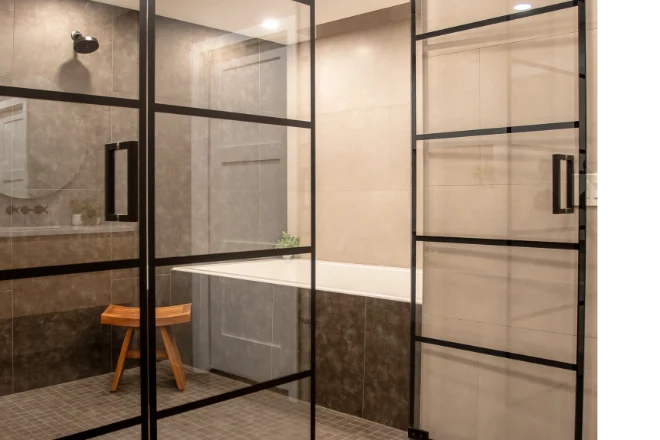
9 min read
Unlocking the Shower Mystery: Framed or Frameless? Ever stood in your bathroom, staring at your shower enclosure, and wondered if there's a better...